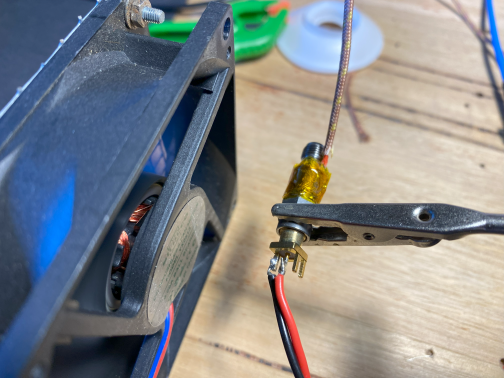@switchabl
Over the past 5 years or so I have accumulated a suite of lab gear with a 1990s list price of in excess of $600k for 1-2 cents on the dollar. This poses a significant cal issue as I cannot afford to send that stuff out for cal.
That's me as well. And now I'm in need to prove a radio RF power output complies to a local standard, without relying on my employer's gear.
I've run a very crude test just now. I strapped a thermocouple to a 20dB 50ohm attenuator and held it in front of a 12V fan with an alligator clip "third hand" fixture. Then I fed DC current into one end of the attenuator:

The results are surprisingly good:

The time constant was quite long. It took a minute or two to settle. When I do linear regression on this, I get only 0.03dB of error. The power range of a few watts might not work for everyone, but I'd be OK with this for my use case. One thing that works is that this uses a nearly perfect RF load. This attenuator is specified out to a few GHz. Using a small 50 ohm termination might work better.
Anyway, good discussion and input from everyone so far. I'll setup a pair of these sensors next, and see if I can keep the heat flow identical, so that the setup can then do real time DC substitution / comparison.